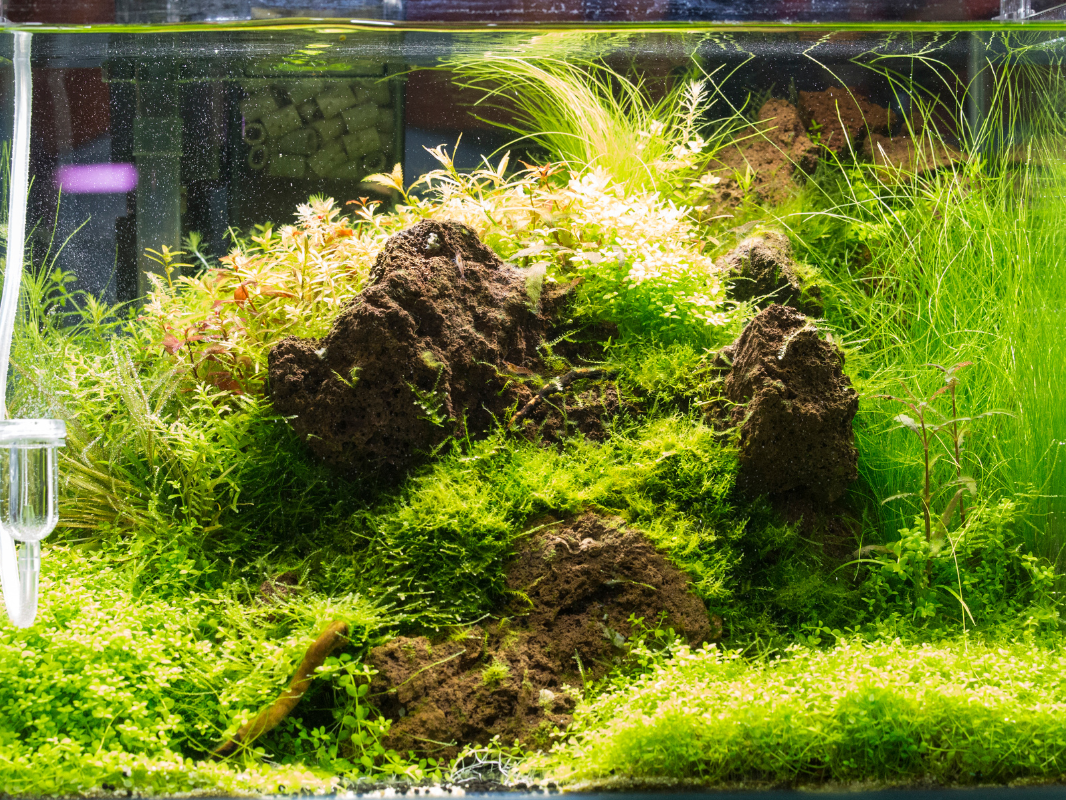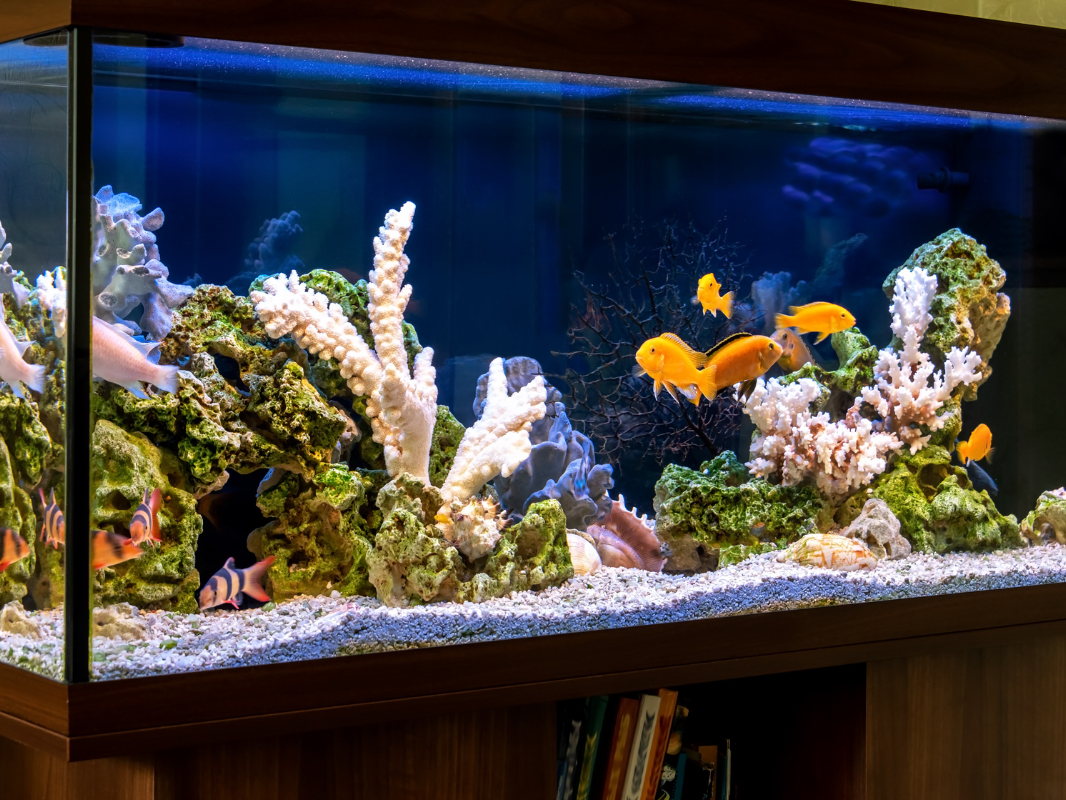Diving into the world of saltwater aquariums is more than just a hobby; it’s a fascinating journey into a vibrant underwater world. Setting up a saltwater fish tank is an art that combines patience, care, and a bit of marine magic. Whether you’re a seasoned aquarist or a curious newbie, this guide will walk you through the essentials of creating your own slice of the ocean.
Jump to:
Diving into Saltwater Aquariums
Saltwater aquariums offer an extraordinary window into the diverse and colorful world of marine life. Unlike their freshwater counterparts, saltwater tanks provide a unique challenge, requiring a deeper understanding of marine ecosystems. But fear not, for the rewards are as vast as the oceans themselves.
Register for our latest in-depth reviews and product round-ups from the experts
Enter your email address below to receive our twice monthly reviews emails.
By entering your details, you are agreeing to our terms and conditions and privacy policy. You can unsubscribe at any time.
Choosing the Right Tank and Equipment
Selecting the right tank is the first step in your saltwater aquarium journey. Consider the size and type of tank based on the space available and the kind of marine life you wish to host. Remember, bigger tanks are often more forgiving in terms of maintaining stable water conditions.
Essential Equipment for Setup
- Filtration System: A robust filtration system is crucial for maintaining water quality.
- Lighting: Proper lighting is essential, especially if you plan to include corals.
- Heater: A reliable heater ensures the water temperature remains stable.
- Protein Skimmer: This helps remove organic compounds from the water.
Understanding Saltwater Tank Cycling
The nitrogen cycle is the cornerstone of a healthy aquarium. Cycling your tank before introducing fish is crucial to establish beneficial bacteria that will convert harmful ammonia into less toxic substances.
The Nitrogen Cycle:
- Ammonia: Fish waste and uneaten food decompose, releasing ammonia.
- Nitrite: Beneficial bacteria convert ammonia into nitrite.
- Nitrate: Another group of bacteria converts nitrite into nitrate, which is less harmful.
Selecting Substrate and Decoration
The substrate forms the bed of your aquarium and plays a vital role in the overall health of the tank. Live sand, for instance, can host beneficial bacteria and aid in the filtration process.
Decoration Ideas:
- Live Rock: Provides a natural habitat for marine life and aids in biological filtration.
- Artificial Decorations: Ensure they are safe for saltwater use.
Setting Up Filtration and Lighting Systems
The filtration system is the heart of your saltwater aquarium, keeping the water clean and safe for its inhabitants. Lighting, on the other hand, is not just for aesthetics; it’s vital for the health of photosynthetic organisms like corals.
Types of Filtration Systems:
- Hang-On-Back Filters: Suitable for smaller tanks.
- Canister Filters: Ideal for larger setups.
- Sumps: Offer additional space for equipment and increase water volume.
Lighting Requirements:
- Fish-Only Tanks: Standard lighting is usually sufficient.
- Reef Tanks: Require more intense lighting to support coral growth.
Setting up a saltwater fish tank is a rewarding endeavor that opens up a world of aquatic beauty. Remember, patience and attention to detail are key. With the right setup and care, your saltwater aquarium will thrive, offering a mesmerizing glimpse into the wonders of the ocean.
Frequently Asked Questions
- How long does it take to cycle a saltwater tank?
- Typically, it takes 4-6 weeks for a saltwater tank to fully cycle. However, this can vary based on various factors like tank size and filtration efficiency.
- Can I mix different types of fish in my saltwater aquarium?
- Yes, but it’s important to research and ensure compatibility among different species to avoid aggression and territorial issues.
- How often should I change the water in my saltwater tank?
- Regular water changes, typically 10-20% every two weeks, are recommended to maintain optimal water quality.
Useful Tables
| Parameter | Ideal Range |
| pH | 8.1 – 8.4 |
| Salinity | 1.020 – 1.025 |
| Temperature | 75 – 80°F |
| Fish Type | Tank Size Requirement |
| Clownfish | 20 gallons |
| Tangs | 100+ gallons |
External Resources
Remember, the journey of setting up a saltwater aquarium is as enriching as the destination. Happy fishkeeping!
Navigating the Depths: Advanced Saltwater Fish Tank Care
In this segment, we’ll dive deeper into the nuances of maintaining a thriving marine environment. From water quality management to the exciting world of marine livestock, we’re here to guide you through the advanced aspects of saltwater aquarium care.
Continuing Your Saltwater Aquarium Adventure
Now that your tank is set up and cycling, it’s time to focus on long-term care and maintenance. A successful saltwater aquarium is a delicate balance of the right elements, and with a bit of know-how, you can create a stunning underwater ecosystem.
Water Quality and Parameters
Maintaining pristine water conditions is crucial for the health of your marine inhabitants. Regular testing and adjustments are key to a balanced aquarium.
Key Parameters to Monitor:
- pH Levels: Essential for fish and coral health.
- Salinity: Critical for replicating natural marine conditions.
- Temperature: Consistent temperature is vital for all tank inhabitants.
Adding Livestock: Fish and Invertebrates
Choosing the right mix of fish and invertebrates can turn your tank into a vibrant marine showcase. Research compatibility and care requirements to ensure a harmonious tank.
Tips for Livestock Selection:
- Research: Understand the needs and temperament of each species.
- Quarantine: New additions should be quarantined to prevent disease spread.
- Acclimation: Properly acclimate new inhabitants to avoid shock.
Maintenance and Care
Regular maintenance is the backbone of a healthy saltwater aquarium. From water changes to equipment checks, consistency is key.
Maintenance Checklist:
- Water Changes: Essential for removing toxins and replenishing minerals.
- Filter Maintenance: Regular cleaning and media replacement.
- Algae Control: Keep algae in check to maintain a clean and healthy tank.
Advanced Considerations
As you gain experience, you might want to explore advanced aspects like reef tank setups or specialized equipment.
Exploring Reef Tanks:
- Coral Care: Requires specific lighting and water conditions.
Invertebrate Selection: Choose reef-safe
Useful Tables
| Invertebrate | Care Level |
| Shrimp | Moderate |
| Snails | Easy |
| Coral Type | Lighting Needs |
| Soft Corals | Moderate |
| Hard Corals | High |
Frequently Asked Questions
- Gradually acclimate them to the tank’s water parameters to reduce stress.
- Regular cleaning, controlling nutrients, and proper lighting can help manage algae.
- Corals have specific lighting and water quality needs; ensure your tank meets these requirements.
Martin Cochran
Dive into fish care with Martin, your guide from the coastal beauty of Brighton. He shares tips on keeping your aquatic companions happy and healthy. Join him on a fin-tastic journey where every swim is a voyage of joy. Trust Martin for a smooth sailing aquatic experience.




